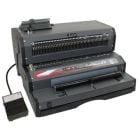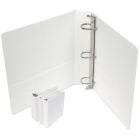Sparking Students' Interest Using Colored Paper and Binding
As most teachers know, creating lesson plans and making bulletin boards are tasks they were able to practice and begin to master as part of their teacher preparation programs. What many programs fail to address is how to spark student interest in those lessons. As seasoned educational professionals know, getting the students interested in the assignment is often the biggest hurdle they must cross.
Student interest is often the differentiating factor between teachers who have established control of their classrooms and teachers who have not. Most of the time, students who act out are those who are feeling bored and who are not properly inspired to work. Good teachers know that there are simple things they can do to get students interested in projects and class work.
One of the ways teachers can stimulate a little interest is to vary the color of the paper assignments are printed on. This is especially beneficial for tougher assignments that most of them are disinclined to complete, much less enjoy. It seems like such a silly thing, but students do actually react to paper in a new color. Not only are students more interested in completing such work, they also sometimes are more careful with the work they submit on colored paper. It is a simple suggestion that probably won't revolutionize your teaching, but if it results in increased participation, it's worth a shot, right?
In that same vein, students like to see their names in print and their designs in use. Most of them relish the attention they receive from their peers when they are acknowledged for something they have done. For that reason, teachers should consider covering their bulletin boards and wall with the works of the students in the class instead of with commercial bulletin board kits. They like to admire each other's work and will sometimes become competitive over who will do a better job on the next project.
Continuing with this idea of showcasing student work, teachers can keep files of each student's best work which they can then assemble into a portfolio at the end of the semester or school year. Provided all of the items are the same size (like 8½ x 11), teachers can use a binding machine to punch holes into the documents and bind them into a single publication containing the best of each student's work for the semester or year. Many kinds of binding machines are available, so educators need to think a bit about how many pages they will need to bind at a time and what types of covers they prefer.
In addition to using a binding machine to create student portfolios, teachers can also use the machine to create custom educational materials such as lab books, journals, and daily language notebooks. Educators may want to consider bringing the machine into the classroom to allow students to assemble their own journals or lab books. This allows them to see firsthand just how much effort goes into these things and can also provide them the opportunity to customize their own book somewhat (according to the teacher's specifications).
Learning is at least a somewhat subjective process. By making a few simple changes in how teachers present information to students, it's possible to teach students more by virtue of their increased interest in the educational materials themselves.








